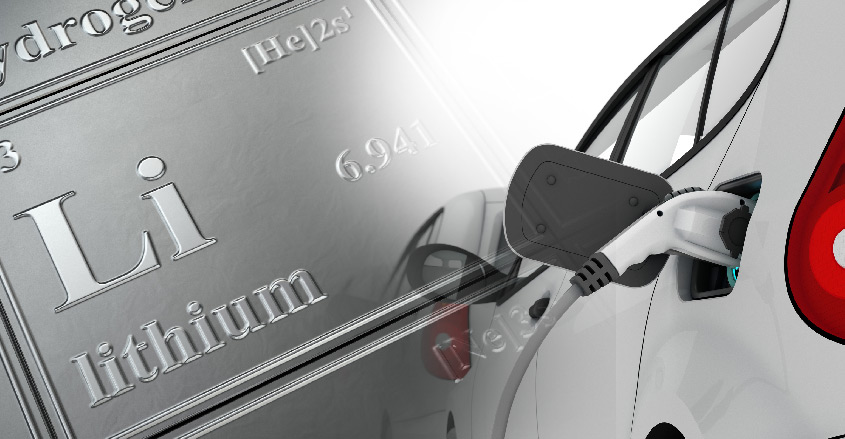Lithium investing is off to a flying start in 2018, with worldwide demand for the white metal on the rise due to battery technology advancements and the rapid growth of the renewable energy businesses, which use lithium for power storage.
Investors believe that the global push for electric vehicles (EV), which are dependent on lithium batteries, will create an unprecedented demand for lithium.
Just one Tesla Model S, for instance, consumes more lithium than 10,000 cell phones.
INN Daily data shows that the global demand for lithium will triple by 2025 as EVs become more acceptable and mainstream.
Figures from Statista reveal that more than 200,000 million metric tons of this soft metal was consumed last year.
Looking at the consistent growth in demand, lithium producers are maximizing their current mining operations, while competing aggressively for new lucrative locations to mine the metal.
Some of the top lithium mining leaders in the market today include Lithium Americas Corp, NRG Metals Inc., Lithium Corporation, Nemaska Lithium Inc., and Lundin Mining Corp.
The world’s biggest producer of lithium, Sociedad Quimica y Minera (SQM), has recently entered into an agreement with Chilean government to increase output over the next few years.
The EV battery supply chain has welcomed the moves that lithium producers are making to increase supply in the market.
The battery makers realize that the industry needs stable and growing supply of lithium if the stationary energy storage and EV markets have to take off in a big way in the coming years.
Toyota takes a stake
Toyota Tsusho, the trading arm of the global automaker, is set to acquire a 15% stake in Argentine miner Orocobre, which enable the company to raise its output levels at its flagship lithium production facility in Olaroz.
From 2019-2020, the production at Olaroz facility will go up from 14,000 tons of lithium carbonate equivalent per year to 42,500 tons.
Toyota Tsusho additionally plans to acquire the exclusive marketing rights to entire lithium chemical production at the expanded facility.
The joint venture is also moving to create a major lithium hydroxide production facility in Japan, using the available government incentives along with debt to cover the capital expenditure involved.
Investors are likely to increase their focus in 2018 on producers that are at an advanced stage of lithium exploration rather than go after early stage contenders, contends Livio Filice at SeekingAlpha.
If the trend continues, the market valuations for advanced stage exploration corporations, such as Nemaska Lithium Advantage Lithium and Lithium Americas will significantly appreciate, he writes.
At the same time, investment funds are likely to drop early stage lithium exploration companies because of the higher risks and high capital costs involved, Filice believes.
Discerning investors will need to differentiate between advanced stage exploration businesses and the numerous recent entrants in the business of lithium exploration that have little experience and no strategic partnerships, he concludes.


